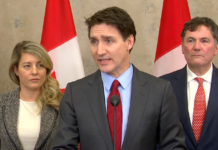The Eby government recently launched a $500 million “Rental Protection Fund” to help address affordability woes in British Columbia. The fund, which will offer one-time grants to non-profit housing organizations to buy residential rental buildings (including co-operatives) listed for sale, is meant to protect existing renters from evictions.
But as well-intentioned as this fund may be, it won’t address the issue at the root of B.C.’s rental woes—that is, a severe imbalance between the number of renters and the availability of units to rent—and may actually make things worse.
In 2021 (the latest year of available data) the Abbotsford-Mission census metropolitan area (CMA) rental vacancy rate was 1.6%, which while paltry was still higher than in the Vancouver CMA (1.2%), the Victoria CMA (0.9%) and the Kelowna CMA (0.6%—the lowest among all metropolitan areas Canada-wide, which averaged 3.4%).
Unsurprisingly, average rents in B.C. were 24% higher than the Canadian average, according to the most recent census. It’s basic economics—when demand outruns supply, prices rise.
Again, the rental fund won’t do anything to increase the supply of rental housing or any other kind of housing for that matter. It will simply move housing units out of the private market and into the non-profit sector.
That might sound appealing to some, but here’s the problem—the non-profit sector doesn’t have the same access to capital as businesses and entrepreneurs, so non-profits aren’t as well-positioned to upgrade and expand existing properties. Consequently, after a non-profit purchases an existing building with money from the government’s new fund, it may not be able to redevelop that building and add more units. This unintended consequence could perversely result in fewer units being built than would be the case absent this latest government intervention.
But there’s good news. If the Eby government wants to help renters—and non-profit housing organizations catering to low-income renters—there are plenty of ways to do that. It could start with widespread zoning reform.
For example, relax the height and/or width restrictions that currently limit the size of existing buildings—from single-family homes to low-rise apartments—so building owners can increase both the number and size of units. This would also help non-profits who could see a dramatic increase in buildable space without a dime from the government.
Of course, people worry about low-income tenants forced to find new housing when rental buildings are sold for redevelopment. While there are some safeguards in place to help displaced tenants (including a robust Tenant Relocation and Protection Policy in Vancouver), it can be challenging to find another vacant unit. That’s one of the problems with routinely having a rental vacancy rate around one per cent. It doesn’t leave people with many options, and few of them are cheap.
The solution again is to simply allow more housing to be built. Investors are, to a large extent, betting on scarcity. Eliminate the scarcity and it’s harder to charge as much for rent—when demand outruns supply, prices rise. If the government adopted this approach, it would not only help specific tenants in specific buildings but it would help all renters who could use some relief from rising rents.
The Eby government’s new rental fund focuses on who owns the rental units—something British Columbians struggling to find and retain rental housing likely care little about. If the government wants to address rental affordability woes, it should remove barriers to housing construction including renovations to existing units and the construction of new units.
Steve Lafleur is a senior fellow of the Fraser Institute.





















